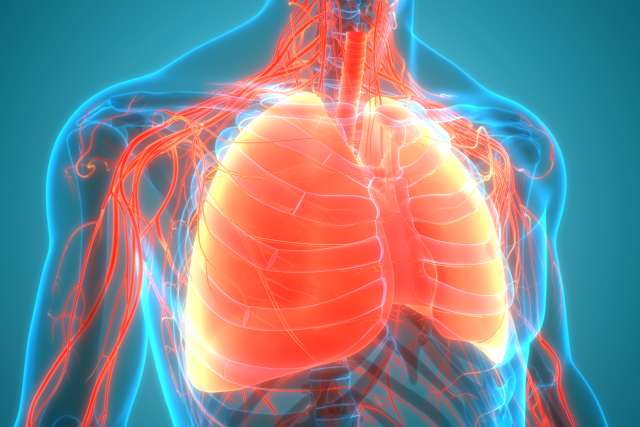A new study from researchers with UCLA Health and collaborating organizations has found that asporin, a protein encoded by the ASPN gene, plays a protective role in pulmonary arterial hypertension (PAH).
Their findings, published August 21 in the peer-reviewed journal , offer new insights into this incurable, often-fatal disease and suggest potential new ways to treat it.
“We were surprised to find that asporin, which previously had not been linked to PAH, gets upregulated to increased levels as a response to counteract this disease process,” said Dr. Jason Hong, a pulmonary and critical care physician at UCLA Health and the study’s corresponding author. “This novel finding opens up new avenues for understanding PAH pathobiology and developing potential therapies.”
Pulmonary hypertension is a serious medical condition characterized by high blood pressure in the arteries that supply the lungs. It causes these arteries to narrow or become blocked, which, in turn, slows blood flow to the heart, requiring it to work harder to pump blood through the lungs. Eventually, the heart muscle becomes weak and begins to fail.
Need for New Therapies
According to recent estimates, PAH affects about 1% of the global population, but that number climbs to 10% in people who are 65 or older.
There’s no cure for the disease, but medications and lifestyle changes can help slow progression, manage symptoms and prolong life.
The urgent need for new therapies, combined with the potential of multiomics – an integrated approach to drive discovery across multiple levels of biology – inspired Hong and research colleagues, including co-first author Lejla Medzikovic and senior author Mansoureh Eghbali to take a deep dive into the disease. Both work at UCLA’s
Methodology
For the study, the researchers applied novel computational methods, including transcriptomic profiling and deep phenotyping, to lung samples of 96 PAH patients and 52 control subjects without the condition from the largest multicenter PAH lung biobank available to-date. They integrated this data with clinical information, genome-wide association studies, graphic models of probabilities and multiomics analysis.
"Our detailed analysis found higher levels of asporin in the lungs and plasma of PAH patients, which were linked to less severe disease," Hong said.
Additionally, Medzikovic noted that their cell and living-organism experiments found that asporin inhibited pulmonary artery smooth muscle cell proliferation and a key signaling pathway that occurs with PAH.
“We also demonstrated that recombinant asporin treatment reduced PAH severity in preclinical models,” said Medzikovic.
Next Steps
Hong and colleagues plan to further investigate the mechanisms by which asporin exerts its protective effects in PAH and explore potential therapeutic applications, focusing on how to translate their findings into clinical trials.
“Asporin represents a promising new target for therapeutic intervention in pulmonary arterial hypertension,” he explained. “Enhancing asporin levels in PAH patients could potentially lead to improved clinical outcomes and reduced disease progression.”
Article:
Authors: Jason Hong, MD, PhD,* Lejla Medzikovic, PhD*, Wasila Sun, BS‡, Brenda Wong, BA‡, Gregoire Ruffenach, PhD, Christopher J. Rhodes, PhD, Adam Brownstein, MD, Lloyd L. Liang, MS, Laila Aryan, PhD, Min Li, PhD, Arjun Vadgama, Zeyneb Kurt, PhD, Tae-Hwi Schwantes- An, PhD, Elizabeth A. Mickler, MS, Stefan Graf, PhD, Melanie Eyries, PhD, Katie A. Lutz, BS, Michael W. Pauciulo, MBA, Richard C. Trembath, MD, Frederic Perros, PhD, David Montani, MD, PhD, Nicholas W. Morrell, MD, Florent Soubrier, MD, PhD, Martin R. Wilkins, MD, William C. Nichols, PhD, Micheala A. Aldred, PhD, Ankit A. Desai, MD, David-Alexandre Tregouet, PhD, Soban Umar, MD, PhD, Rajan Saggar, MD, Richard Channick, MD, Rubin M. Tuder, MD, Mark W. Geraci, MD, Robert S. Stearman, PhD†, Xia Yang, PhD†, and senior author, Mansoureh Eghbali, PhD†. Legend: *Joint first authors; ‡ Joint second authors; †Joint last authors






